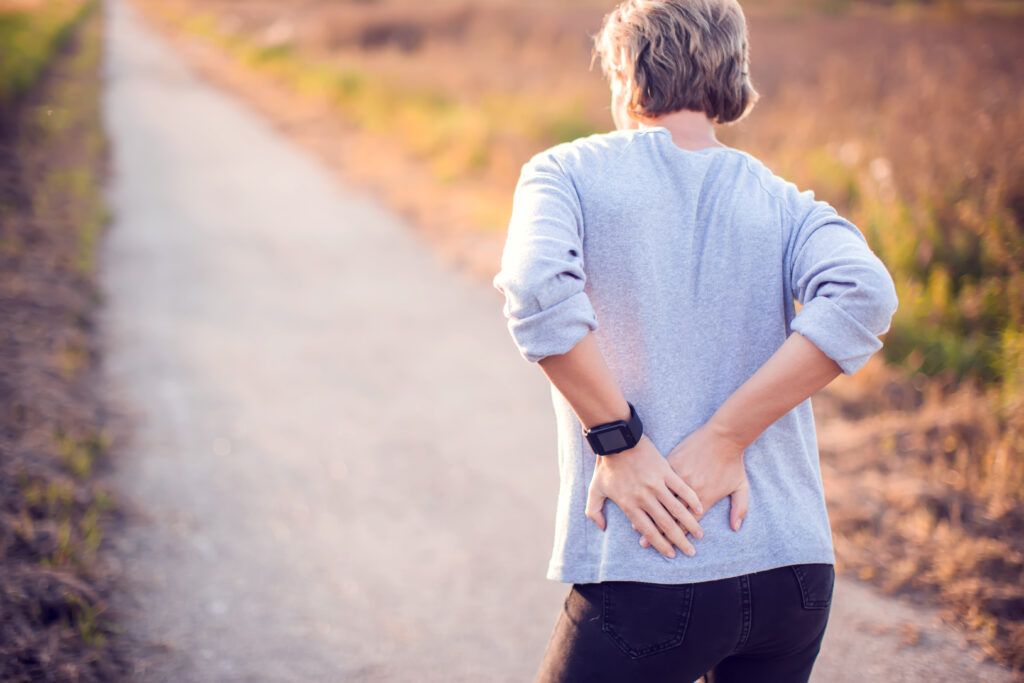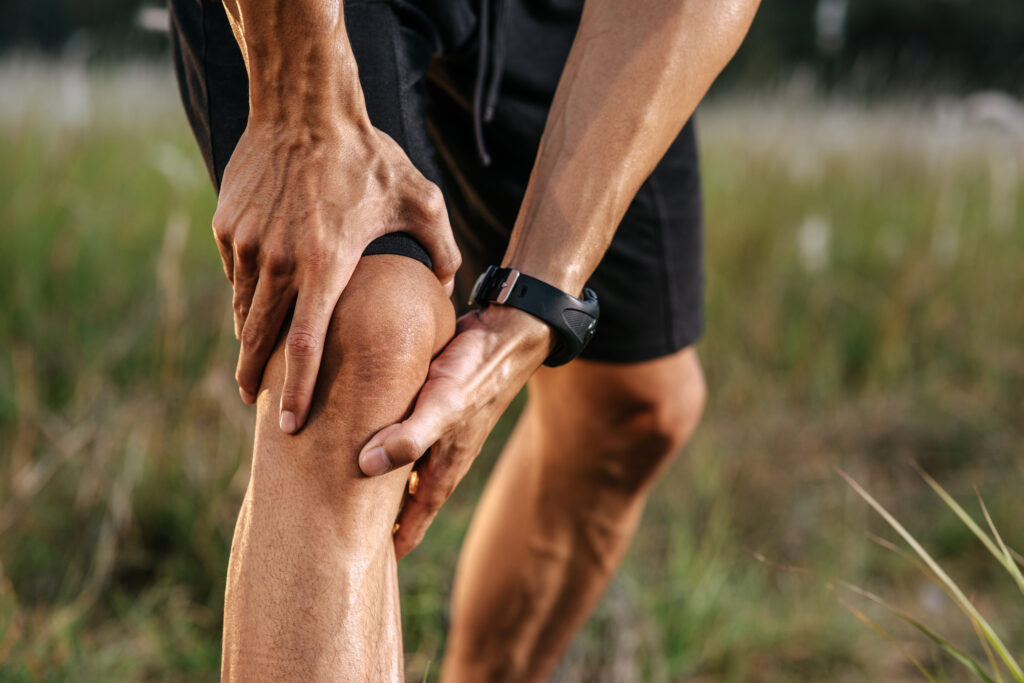When you face a sports injury, understanding the best recovery techniques in San Antonio can make all the difference. You'll find that personalized physical therapy programs and innovative treatments like cryotherapy offer promising pathways to regaining your strength and mobility. Nutrition also plays a vital role in healing, but it's not just about what you eat—it's about how you approach your entire recovery process. Curious about how these elements intertwine and what specific strategies can expedite your healing? There's more to explore.
Physical Therapy Options
Often, athletes turn to physical therapy as a fundamental component of their recovery process. You might find that physical therapy helps alleviate pain, restore movement, and prevent future injuries. It's not just about getting back on the field; it's about doing so safely and effectively.
When you start physical therapy, you'll likely undergo a thorough assessment. Your therapist will evaluate your range of motion, strength, and mobility to create a personalized treatment plan tailored to your specific needs. This plan may include various modalities such as ultrasound, electrical stimulation, or manual therapy techniques to decrease pain and inflammation.
As you progress, your therapist will introduce therapeutic exercises aimed at improving strength and flexibility. These exercises are essential because they help rebuild the muscles around the injured area, allowing you to regain stability and function.
You'll also work on balance and coordination, which are crucial for athletes to prevent re-injury.
Another key aspect of physical therapy is education. Your therapist will teach you about your injury, proper body mechanics, and how to modify your activities to avoid further damage. This knowledge empowers you to take control of your recovery.
Finally, consistency is imperative. Attending your sessions regularly and following your therapist's recommendations will greatly enhance your recovery journey.
Embracing physical therapy not only aids in healing but also equips you with the tools to return stronger and smarter in your sport.
Advanced Rehabilitation Techniques
How can advanced rehabilitation techniques enhance your recovery process? By incorporating innovative approaches, you can greatly speed up your healing and regain strength more effectively.
Techniques like neuromuscular re-education help you retrain your muscles and improve coordination, which is essential after an injury. This method focuses on restoring the communication between your brain and muscles, guaranteeing that you regain ideal movement patterns.
Another powerful approach is the use of electrical stimulation. This technique activates your muscles through controlled electrical impulses, promoting muscle contraction and enhancing blood flow to the injured area. Not only does this alleviate pain, but it also helps prevent muscle atrophy during your recovery.
Aquatic therapy is another advanced technique you should consider. Exercising in water reduces the impact on your joints while allowing you to build strength and flexibility. The buoyancy of water provides a safe environment to perform movements that may be too painful or risky on land.
Additionally, incorporating advanced modalities like ultrasound therapy can further aid in your recovery. This technique uses sound waves to promote tissue healing and reduce inflammation. It's especially beneficial for soft tissue injuries, accelerating your return to activity.
Finally, you can't overlook the importance of personalized rehabilitation programs. Working closely with a skilled therapist guarantees your recovery plan is tailored to your specific needs, maximizing the effectiveness of these advanced techniques.
Importance of Rest and Recovery
After an injury, prioritizing rest and recovery is essential for your overall healing process. You might feel the urge to jump back into your routine, but your body needs time to heal properly. Rest isn't just about putting your feet up; it's a significant part of the recovery cycle that helps your body repair damaged tissues and regain strength.
Listening to your body is key. If you're feeling pain or discomfort, don't push through it—give yourself permission to take a break. This doesn't mean you have to be completely inactive. Gentle movements and light stretching can aid circulation and promote healing without overexerting yourself.
Balance is important; while you need rest, staying slightly active can also help prevent stiffness.
It's also important to establish a regular sleep routine. Quality sleep allows your body to enter a restorative state, where it can focus on healing and rebuilding. Aim for 7-9 hours of sleep each night, and create a calming bedtime environment to enhance your rest.
Nutrition for Healing
Nutrition plays an essential role in your recovery, impacting how quickly and effectively your body heals from injury. When you're nursing an injury, your body needs a variety of nutrients to repair tissues, reduce inflammation, and restore strength. Focus on incorporating a balanced diet rich in vitamins, minerals, proteins, and healthy fats.
Start with protein, as it's essential for muscle repair and growth. Incorporate lean meats, fish, eggs, and plant-based sources like beans and lentils into your meals. Aim for a sufficient intake to support your recovery—around 1.2 to 2.0 grams per kilogram of body weight, depending on the severity of your injury.
Don't overlook the importance of antioxidants, found in fruits and vegetables. Foods like berries, leafy greens, and citrus fruits help combat inflammation and promote healing. Vitamin C and zinc are particularly important for collagen formation, so include options like oranges, strawberries, and nuts in your diet.
Healthy fats, such as those from avocados, nuts, and olive oil, are also crucial. They help reduce inflammation and provide energy for your healing process. Stay hydrated as well; water is key to maintaining ideal bodily functions.
Finally, consider timing your meals and snacks around your workouts and recovery periods to maximize nutrient absorption. This strategic approach will give your body the resources it needs, enhancing your recovery and getting you back to your sport sooner.
Prioritizing your nutrition during this time can make a significant difference in your healing journey.
Innovative Treatment Modalities
Innovative treatment modalities are transforming the landscape of sports injury recovery, offering athletes new ways to heal and regain strength. You might be surprised at how advanced techniques can expedite your rehabilitation process.
One such method is the use of regenerative medicine, which harnesses your body's own healing capabilities. Techniques like platelet-rich plasma (PRP) therapy involve drawing your blood, processing it to concentrate the platelets, and then injecting it back into the injured area. This can greatly enhance tissue repair and reduce recovery time.
Another exciting option is cryotherapy. By exposing your body to extremely cold temperatures for short periods, you can reduce inflammation and speed up recovery. Many athletes swear by this method, feeling rejuvenated after just a few sessions.
Similarly, electrical stimulation therapy uses low-level electrical currents to promote muscle contractions and improve circulation, helping to strengthen your muscles post-injury.
Additionally, vibration therapy has gained traction. This technique involves standing on a vibrating platform, which can stimulate muscle contraction and improve flexibility, making it a great addition to your recovery routine.
Ultimately, virtual reality (VR) is making its way into rehabilitation, allowing you to engage in immersive environments that help improve motor skills and coordination during your recovery process.
Pain Management Strategies
When you're recovering from a sports injury, managing pain effectively is essential for your progress.
You might consider medication options that can help alleviate discomfort, while also exploring alternative therapies that offer additional benefits.
Understanding these strategies can empower you to make informed choices for your recovery journey.
Medication Options Available
Pain management is an essential aspect of sports injury recovery, and understanding your medication options can make a considerable difference in your healing journey. When dealing with pain, over-the-counter (OTC) medications like ibuprofen or acetaminophen are often your first line of defense. These can help reduce inflammation and alleviate discomfort, allowing you to engage in necessary rehabilitation exercises.
If your pain is more severe, your healthcare provider might prescribe stronger medications, such as opioids, for short-term use. However, these come with risks and potential side effects, so it's important to follow your doctor's guidelines closely.
Additionally, topical analgesics can provide localized relief for specific areas, making them a great option for targeted pain management.
In some cases, corticosteroid injections may be recommended. These can greatly reduce inflammation and pain in a joint or muscle, promoting more effective recovery.
Always discuss your options with your healthcare provider to tailor a pain management plan that best suits your needs. Remember, effective pain management not only aids in recovery but also helps you get back to your sport more quickly and safely.
Alternative Therapies Benefits
Exploring alternative therapies can open up new avenues for pain management in your sports injury recovery. These approaches often complement traditional treatments, helping you reduce pain and promote healing without the side effects commonly associated with medications.
Acupuncture, for instance, has gained popularity for its ability to relieve pain and improve overall well-being. By targeting specific pressure points, it encourages your body's natural healing mechanisms.
Similarly, chiropractic care can realign your body, alleviating pain and enhancing mobility.
Physical therapy employs various techniques, including massage, stretching, and strengthening exercises, to aid in your recovery. These methods not only address pain but also help you regain strength and flexibility.
Additionally, mind-body practices, like yoga and meditation, can greatly reduce stress and improve your mental resilience during recovery. Engaging in these activities can help you manage pain more effectively by promoting relaxation and reducing muscle tension.
Finally, consider nutritional support through supplements or a balanced diet rich in anti-inflammatory foods. This holistic approach can enhance your recovery journey, making alternative therapies a valuable addition to your pain management strategy.
Psychological Support in Recovery
Injuries can feel isolating, but psychological support plays an essential role in recovery. When you're sidelined, it's easy to fall into negative thought patterns, doubting your ability to return to your sport. That's where psychological support comes in. Having someone to talk to can make a huge difference. Whether it's a sports psychologist, therapist, or a supportive friend, a listening ear can help you process your feelings and keep you motivated.
Understanding your emotions is vital. You might experience frustration, anger, or even sadness as you navigate your recovery journey. A professional can help you develop coping strategies to manage these feelings, allowing you to maintain a positive outlook. Techniques like cognitive-behavioral therapy (CBT) can be particularly effective, as they help you reframe negative thoughts and focus on your progress.
Setting realistic goals is another important aspect of psychological support. Working with a mental health professional can guide you in establishing achievable milestones, which can boost your confidence and reduce anxiety. Celebrate small victories along the way; they'll remind you that you're making progress.
Finally, remember that recovery isn't just physical. It's a holistic process that involves your mental and emotional well-being. Surrounding yourself with encouraging people and engaging in activities that uplift your spirit can enhance your recovery experience.
Community Resources and Programs
A strong support network can make all the difference during your recovery, and community resources and programs are invaluable assets. In San Antonio, you'll find numerous options to aid your healing journey. Local hospitals and clinics often offer specialized rehabilitation programs tailored to athletes. These facilities provide access to expert physical therapists who understand the specific demands of your sport.
Don't overlook community centers that frequently host workshops and classes focused on injury prevention and recovery. Participating in these activities not only helps you learn but also connects you with others facing similar challenges. You can share experiences, tips, and encouragement, which can boost your morale.
Additionally, consider joining local sports clubs or teams that emphasize injury recovery. These groups often foster a sense of camaraderie and can be a source of motivation. They might also offer access to group training sessions designed specifically for recovering athletes, allowing you to regain strength and confidence in a supportive environment.
If you're looking for mental health support, San Antonio has resources that focus on the psychological aspects of injury recovery. Counseling services and support groups can help you navigate the emotional hurdles that come with being sidelined.
Lastly, don't forget about online resources and forums where you can connect with broader communities. Websites and social media groups dedicated to sports recovery can provide insights, tips, and additional support.
Conclusion
In San Antonio, you have access to a range of effective techniques for sports injury recovery. By combining personalized physical therapy, innovative treatments, and proper nutrition, you can enhance your healing process. Don't underestimate the importance of rest and psychological support, as they play a vital role in your recovery journey. Utilize community resources to stay connected and motivated. With the right approach, you'll not only recover but come back stronger than ever.



